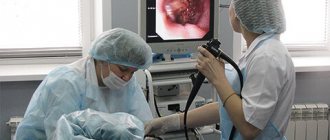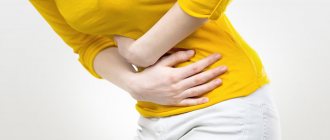09/23/2019 Reading time: 6 min 3071 0
- The main causes of regurgitation in children
- Pathological regurgitation
- How to distinguish regurgitation from vomiting
The most common cause of regurgitation is the structural features of the developing esophagus and stomach in a child in the first half of life, in particular weak muscles of the sphincter (valve) of the esophagus at the junction with the stomach. And the esophagus itself is relatively short and wide. The esophagus and stomach of a child at this age are compared to an “open bottle.”
Therefore, when overeating and (or) excessive air entering the stomach, when the child eats hastily and swallows air along with milk (or cries a lot before feeding), food from the stomach easily moves back into the oral cavity.
Regurgitation is observed, according to various sources, in 80–100% of infants under the age of 3 months. This is normal.
For example, American scientists estimate that regurgitation occurs in 100% of children aged 0 to 3 months, and in 20% of children it continues during the first year of life. In this case, the frequency of regurgitation after feeding ranges from 18 to 50%. In most children, regurgitation disappears or becomes much less frequent by the 4th–6th month of life.
Regurgitation, or regurgitation, is essentially the reflux of stomach contents into the pharynx, esophagus, and then into the oral cavity. Unlike vomiting, regurgitation is a passive process, that is, the muscles of the anterior abdominal wall, diaphragm and stomach are not involved in it. If a child spits up occasionally after feeding, this is normal and does not require special examinations, much less treatment.
It is important to understand two things. The first is how regurgitation (a natural process) differs from vomiting (can be a symptom of disorders in the body and diseases). The second is in what case even regurgitation is a reason to be wary. We'll talk about this below.
What is regurgitation?
Regurgitation in infants is considered to be the spontaneous release of a small amount of just eaten food (milk or formula) into the baby’s mouth from the stomach.
Content:
1. Types of regurgitation |
00:56 (in video) 2. Physiological causes of regurgitation | 01:40 (in video) 3. Functional causes of regurgitation | 02:43 (in video) 4. Permissible frequency of regurgitation 05:13 (in video) 5. Until what age can regurgitation continue | 05:47 (in video) 6. Is it necessary to feed the baby after spitting up | 06:23 (in video) 7. Actions when spitting up | 07:11 (in video) 8. Congenital pathologies of the gastrointestinal tract, as a cause of regurgitation 9. Actions to prevent regurgitation Online consultation with a pediatrician (Breastfeeding Specialist)
Online consultation
During the consultation, you will be able to voice your problem, the doctor will clarify the situation, interpret the tests, answer your questions and give the necessary recommendations.
Types of regurgitation in newborns
There are 3 types of regurgitation:
- belching - the release of air captured by the baby when eating, as a rule, a small volume of milk or formula comes out;
- regurgitation - the food received and the air along with it come out very abundantly. In time, this occurs simultaneously with the end of the meal or after a short period of time. Children in the first 5 months of life are more often susceptible to this phenomenon. Does not cause anxiety or crying in the child, appetite does not disappear;
- vomiting is similar to regurgitation, but there are a number of features. The child is capricious, cries, becomes sleepy, lethargic. There is a complete loss of appetite and reluctance to eat.
Air in the stomach
What is expressed in
The baby tosses and turns, cries or screams loudly.
Causes
Air in the stomach, which the child swallows along with food, regardless of the feeding method.
What can you do
You need to help the baby release excess air:
- Hold him upright or place him face down on your lap, pat his back and wait for him to burp;
- During feeding, make sure that the baby grasps with his mouth not only the nipple itself, but also the areola. If he feeds from a bottle, hold it so that the neck is always full.
Physiological causes of regurgitation
- short esophagus or ball-shaped esophagus;
- the esophagus becomes wider in the upper part (has the shape of a funnel);
- the esophagus is narrowed (this process is normal, according to physiology);
- The gastric sphincter is underdeveloped. This is a temporary phenomenon (due to age).
The muscular corset of the stomach is still weak, and the mucous membranes are quite sensitive. That is why, when food enters the stomach, its bottom begins to produce contractile movements. As the pressure level increases, food makes its way back into the oral cavity from the esophagus.
Functional causes of regurgitation
Due to the physiological immaturity of the sphincter located between the stomach and esophagus. After food products pass through it, it may not close. Food can easily pass through the esophagus into the oral cavity. In children of the first year of life, this sphincter is poorly developed and may not work well.
- the structure of the gastrointestinal tract (a child’s esophagus differs from the structure of an adult). When the baby lies down, it is easier for food to move back into the esophagus and ultimately into the oral cavity.
- active movements after eating (turns, games).
- overeating (applies to all types of feeding).
- food is not according to the regime. This applies to "artificial babies" who are often fed as if they were breastfed, i.e. on demand. The mixture takes much longer to digest. Eating food not according to a schedule, regime, but at will, on demand, creates excess pressure on the bottom of the stomach, preventing food from being digested normally, so regurgitation may occur.
- the mixture is chosen incorrectly;
- swallowing air during feeding (baby sucks quickly);
- incorrectly attached to the breast, the bottle is positioned incorrectly, read more about breastfeeding positions here;
- with a sudden change of position after eating (swaddling, massage, games).
- due to the resulting pressure on the abdominal cavity - a narrow diaper, a tight diaper, colic, gas, constipation.
- congenital defects of the gastrointestinal tract, diseases associated with neurology, intestinal obstruction.
- poisoning
- diseases and injuries: hyperthermia, head injury, acute respiratory viral infection, pylorospasm, pyloric stenosis
- Pylorospasm and pyloric stenosis.
What is pylorospasm? The pyloric section of the stomach is the section where the stomach passes into the duodenum. Muscle spasm in this area is called pylorospasm. In such a situation, food does not pass into the stomach or passes through with difficulty, which causes regurgitation.What is pyloric stenosis? This is a phenomenon where food does not pass or passes with difficulty from the stomach to the intestinal area. This condition requires surgical treatment.
Constipation
What is expressed in
During the first month of life, the baby is able to empty the intestines after each feeding. However, by the 4th month, the frequency of stools decreases to 2–4 times a day. At the same time, the “baby” soils diapers more often than the “artificial” one, since mother’s milk is absorbed faster. It also happens, however, that a breastfed baby defecates every other day, or even less often. If at the same time his stool is soft and nothing bothers the baby, then there is no reason for concern. This means that milk is well absorbed by his body.
Symptoms:
- The child is capricious and cries a lot;
- The baby often pushes, but the “result” is zero;
- Any attempt to empty the bowels is accompanied by a cry;
- The feces are hard, either pea-shaped, or the first portion of it looks like a “cork”, followed by a mushy mass.
Causes:
- When breastfeeding, constipation can be caused by the mother's addiction to protein foods (cottage cheese, meat), flour products (white bread, pastries), coffee or tea;
- With artificial feeding - the wrong choice or incorrect preparation of the formula.
How to help your baby:
- Mom should minimize the consumption of the products listed above (except for meat, which must be eaten in quantities of at least 100 g per day);
- Eat more foods with fiber (vegetables and greens);
- Do a tummy massage;
- If the reason is in the mixture, agree on a new one with the pediatrician;
- Occasionally, the child can be given an enema. But laxatives - even in minimal doses - should not be given to babies! In any case, if your baby's condition causes you concern, you should consult your doctor.
When to worry:
- Reduces the number of wet diapers;
- The child's weight decreases.
All this suggests that the baby does not receive enough nutrition.
Acceptable frequency of regurgitation.
As a rule, they indicate a frequency of 6-8 times a day in small portions; you can also find data on regurgitation 2-5 times a day and a volume of ⅔ tablespoons. If the number of regurgitations increases, fever, and vomiting appear, contact your pediatrician. If weakness is added, this is a reason to call an ambulance.
Especially close attention is required when spitting up like a fountain. You need to offer the child water and carry it in a column. If the regurgitation was a one-time occurrence, there is no need to worry.
Diarrhea
Mild diarrhea is common in babies. Moreover, due to the fact that children eat mainly liquid foods in the first few months of life, loose stools in infants should be considered normal. The danger may not be diarrhea itself, but the loss of fluid and salts.
What does it mean:
- Stools become more frequent;
- Very loose stool in a newborn;
- Increased fecal mass during bowel movements;
- “Flakes” appeared in the stool;
- The color and smell of the stool has changed.
Causes:
- Poorly washed bottle or dirty toy;
- Child overheating;
- Infection;
- Introduction of new dishes into the child’s diet;
- Use of certain medications;
- Fright.
What you can do:
- It is necessary to replenish fluid loss as soon as possible - apply it to the breast more often, the doctor may advise you to give him electrolyte solutions;
- If you cannot cope on your own within 2 days, consult a doctor.
When to worry:
- If diarrhea lasts more than 2 days;
- If the child has pallor, chapped lips, dry mouth;
- If the temperature rises, vomiting or rash begins;
- If you suspect that your baby's diarrhea is caused by taking medications.
In this case, you should consult a doctor. After all, loose stools threaten dehydration, which can damage a child’s body.
Do I need to feed my baby after spitting up?
- If the baby has eaten a long time ago, the milk/formula has almost been digested; if the body position changes, the baby may still burp. This is not a reason for additional feeding.
- If regurgitation occurs after feeding, this is a sign of overeating. It’s also not worth feeding.
- If the baby spits up profusely, this is a reason to discuss this issue with the pediatrician. We also don’t supplement feeding.
- If regurgitation is minimal, then you can feed as usual.
Taking into account the physiology of children, it is not possible to find a clear connection between feedings and regurgitation.
Actions to take when spitting up
Sometimes spitting up is easier to prevent than to treat. This does not always apply to cases where regurgitation is not physiological in nature and requires specialist supervision and possible surgical intervention.
So, simple tips to help minimize regurgitation:
- The first time the baby is put to the breast. Try to master this skill while still in the maternity hospital, turning to medical staff for help. You can also seek advice from a breastfeeding specialist. A baby who is properly attached to the breast will swallow less air during feeding, which will reduce the risk of regurgitation and stomach problems in the form of excessive gas formation.
- Get your baby used to lying on his tummy on a hard surface before feeding. This is a kind of massage that also has a beneficial effect on the baby’s stomach, reducing regurgitation and preventing colic and bloating.
- Before feeding, you can do a light massage of the abdomen in a clockwise direction, and light exercises.
- Try not to make your baby scream from hunger, as he will definitely swallow excess air, which will become a likely cause of regurgitation and just a bad mood. If this happens, try to calm the baby down first, and then start feeding.
- If feeding formula from a bottle, make sure it is full. The nipple of the bottle should be filled with milk, not air. Particular attention should be paid to the nipple, namely the hole in the nipple. It must be selected according to the age of the child. The inscription on the box of the bottle will help with this, indicating what age the nipple is designed for. The hole in the nipple regulates the flow of fluid and avoids choking during feeding.
- If during the feeding process the baby stops or begins to arch and cry, you can stop feeding and help the baby burp out excess air. To do this, take him in your arms, position him facing you so that the baby's arms and his head are on your shoulder. The baby will burp and perhaps return to eating again.
- Don't overfeed your baby. It is worth increasing the number of feedings, but reducing the portion. When bottle-feeding, the doctor will calculate the rate of food intake at a time and the total amount per day, based on the age and weight of the baby.
Many pediatricians, gastroenterologists, and surgeons take into account the recommendations of the working group of the European Society of Gastroenterology and Nutrition:
- position treatment
- use of therapeutic nutrition
- medication use
- surgery
- Treatment by position. During feeding, it is important to ensure that the baby is in a position in which the head and upper body are raised above the rest of the body. For this purpose, you can use a pillow or diaper. After feeding, hold the baby in a column to allow excess air to escape. Do not swaddle your baby tightly so as not to squeeze the stomach. After feeding, it is recommended to place the baby on his stomach or right side. But WHO recommends putting your baby to sleep only on his back.
- Medical nutrition. This means more frequent feedings with smaller portions. For children who are bottle-fed, the doctor may recommend the use of a therapeutic antirefluxor formula (AR is its designation on the package). These mixtures have an increased proportion of casein relative to whey proteins, so they are thicker, which prevents their release through the esophagus. Also, these types of foods are often enriched with thickeners, for example, starch or gum - a substance that, under the influence of the acid of the stomach contents, becomes thicker. This substance has the peculiarity of not being dissolved by enzymes, which allows it to remain thick in the stomach longer. It also promotes the active movement of food into the intestines from the stomach.
For more information about artificial feeding, read our article “Artificial feeding: feeding rules and types of formulas.”If the child is breastfed, then, on the recommendation of a doctor, the mixture can be added to the diet and enter the child’s body before milk. The duration of use of this mixture is about 3 months.
- Drug treatment. It is prescribed by a doctor, if the previously indicated methods have not brought results, then it is possible to treat with medications that can significantly improve the contraction of the intestinal walls.
- Surgical intervention. This is an extreme measure when the main cause of regurgitation is pathology.
Now more specifically about each:
Vomit
What is expressed in
The contents of the stomach “splash out like a fountain”, with more force than during regurgitation.
Causes
There are many reasons. This may be normal, or it may indicate pathology. Vomiting is not dangerous if it occurs rarely and is not accompanied by any other alarming symptoms.
- Overeating - in this case, you just need to calm the baby down, caress him, and carry him in your arms. Don't rush to feed him again.
- Maternal hygiene - you should wash your breasts before and after feeding and monitor your own proper nutrition. Fatty, salty and spicy foods can also cause vomiting and digestive disorders.
- Poisoning - vomiting can be a reaction to poor quality food. This is usually accompanied by loose stools. In this case, be sure to call a doctor. Make sure that your body does not lose a lot of fluid. Every 15 minutes, offer your baby a teaspoon of clean boiled water. When the vomiting stops, give a tablespoon. In case of diarrhea, you can give your baby an activated carbon tablet dissolved in water and wait for the doctor to arrive.
- Intestinal infection - usually begins with a sudden attack of vomiting, often with fever or diarrhea. It is necessary to replenish fluid loss as soon as possible and consult a doctor immediately, as this disease can be life-threatening. The doctor will prescribe therapy for you.
- Concussion - if vomiting begins after the baby falls from any height, call an ambulance.
When to worry:
- If the child does not want to breastfeed or take formula;
- If the baby is lethargic;
- If he has a fever;
- If the baby vomits more than 3 times a day;
- If vomiting is accompanied by diarrhea;
- If the child has lost a lot of fluid.
Not a single, even the most modern, artificial formula can become a complete replacement for breast milk.
Congenital pathologies of the gastrointestinal tract as a cause of regurgitation
- Hiatal hernia. This is a congenital defect expressed in the underdevelopment of the structures of the diaphragm. Regurgitation begins within a couple of weeks after birth, lasts a long time, occurs immediately after feeding, the baby stops gaining weight or even loses weight. To identify this diagnosis, an x-ray examination is performed.
- Relaxation of the cardia (or chalasia of the sphincter that separates the esophagus and stomach). If it is not completely closed, then milk is released unchanged from the stomach into the esophagus. This type of regurgitation appears in the first days after birth and can be severe, especially if the baby has not burped up air. The child is lethargic, sucks poorly, sleep is disturbed, and there is no weight gain. X-ray examination can confirm the diagnosis.
- short esophagus (congenital anomaly) - the stomach is located above the diaphragm due to the fact that the esophagus does not correspond to the size of the chest.
If a mother is alarmed by the baby’s regurgitation and at least one of these signs is present, this is a reason to consult a doctor immediately.
- the child spits up often and a lot;
- bile and blood are present;
- regurgitation began after six months or did not go away by this time;
- poor weight gain, lethargy, rare urination.
- restless behavior
- increase in body temperature,
- skin rashes.
The formation of a mechanism that prevents regurgitation begins in the last 3 months of the mother’s pregnancy and continues after the birth of the baby.
Reflux is a mechanism of regurgitation, antireflux is the opposite phenomenon.
The antireflux mechanism is a complex system that can be damaged by various factors. Often this damage is observed in premature babies or children with developmental delays, as well as during difficult pregnancy, cesarean section, difficult childbirth, hypoxia and increased intracranial pressure.
If these factors are present, in addition to regurgitation, the baby will have signs of a nervous system disorder: mild excitability or vice versa, the child will be very lethargic, sleep will be disturbed, there will be tremor of the arms and legs, the presence of hypertonicity and hypotonicity.
As a rule, to determine the cause of regurgitation and prescribe appropriate treatment, ultrasound, x-rays, and computed tomography of the abdominal cavity are used.
Preserving the health of the child is the main task of parents. If your baby’s behavior, sleep, or health have worsened and you are concerned, consult a doctor. Consulting a specialist will never be superfluous. There are a lot of reasons for regurgitation, as a rule, they are all due to physiology, but only mom and dad are able to notice in time that something is going wrong and correct the situation in time without harm to the health of the little person.
When does regurgitation indicate abnormalities?
Digestive problems
In this situation, in addition to regurgitation, the baby will be bothered by other symptoms: colic, bloating, problems with stool. After eating, the child will become restless and cry. This may be due to lactase deficiency or deficiency of other digestive enzymes.
Infectious diseases
The baby will experience not just regurgitation, but vomiting. It is not always possible to immediately distinguish between these two processes. Vomiting occurs on a larger scale than simple regurgitation. And it will not always be associated with feeding. When vomiting, milk is pushed out of the stomach under pressure. When burped, it simply flows gently out of the baby's mouth. In the event of an infectious process, the general condition of the child will also worsen. Vomiting may be accompanied by loose stools, increased temperature, moodiness and lethargy, and the presence of mucus in the regurgitated masses.
Neurological disorders
Regurgitation occurs in a fountain, is observed after each feeding, it intensifies after 6 months of age or continues after 1 year. Regurgitation may be accompanied by tremors of the limbs, drowsiness, and throwing the head back during sleep.
Pathologies of the digestive tract. Against the background of regurgitation, the baby does not gain weight, is capricious, has no appetite, and stool retention occurs for several days. There may also be regurgitation of the entire portion of milk eaten.
If such conditions exist, the child requires immediate assistance from a pediatrician. Only a doctor can tell how serious the deviation is and whether it exists at all. If 2-3 of the listed symptoms appear, self-medication is strictly prohibited. You should immediately call a doctor, he will prescribe the necessary examinations and treatment if necessary.
Actions to prevent regurgitation
- hold in a column after feeding until burping;
- do not place on the stomach after eating;
- if the child is bottle-fed, then after consulting a doctor, you can choose an antirefluxor formula. It will prevent regurgitation due to its thickness;
- We do not play active games after feeding, we do not swaddle. Due to the physiological immaturity of the sphincter located between the stomach and esophagus. After food products pass through it, it may not close. Food can easily pass through the esophagus into the oral cavity. In children of the first year of life, this sphincter is poorly developed and may not work well.








